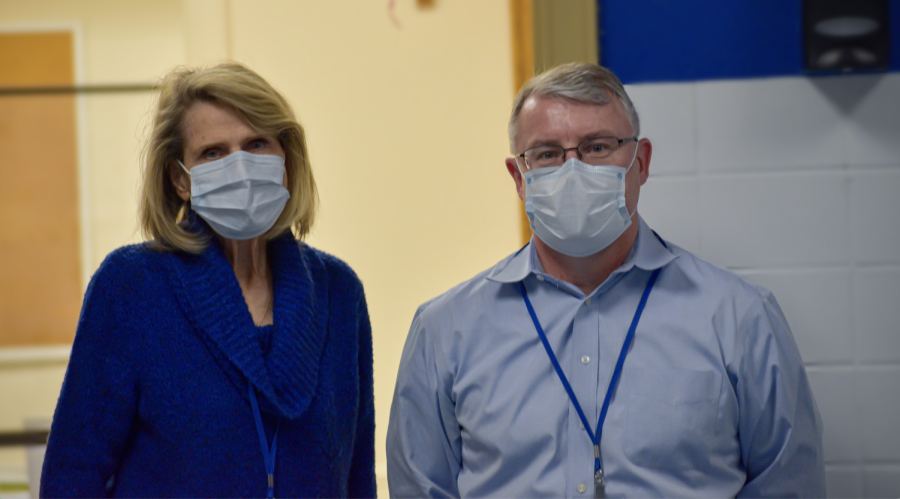WHS Nurses: The Dynamic Duo
Photo by Jacob Wendler
WHS Nurses Carole Stavitski and Robert Ripper
With the reopening of Westfield public schools in the fall came a new routine of filling out early morning surveys, signing into school with student IDs and getting daily temperature checks for those attending in person. From these new daily rituals to dealing with school closings, the school nurses have been constantly working behind the scenes. Over the past year in Westfield, the unprecedented has become the new normal, and it would not have been tolerable without WHS Nurses Carole Stavitski and Robert Ripper.
Since the declaration of the pandemic and the closing of schools in March of 2020, Stavitski and Ripper have worked tirelessly alongside the administration to ensure a safe educational environment for all students. “I think COVID has really swallowed us up here,” said Stavitski. “Since last March, every waking moment is this virus.”
After a spring of webinars learning about the virus and a summer of preparations to supply the school with personal protective equipment, a lot of uncertainty remained in the fall, which continues to be the case. This uncertainty stems from the fact that what might be an indirect exposure or a sick day for one student results in an intricate web of contact tracing, filing reports to the Westfield Board of Health and follow-ups with students.
Stavitski said, “When someone can’t come into the building because they’re sick, we have to get on the phone and follow up. Do they have any siblings in the school district? Do they drive somebody to school? Do they play sports?”
Ripper and Stavitski spend their days in the nurses’ office, surrounded by air purifiers, six feet ground markers and humidifiers. Ripper noted that an average day at WHS contains a morning rush of clearing accidentally flagged health surveys and following up on unclear information a student might have put on their forms. “Right now, there’s a lot of coordinating information on returning students and sending out emails to parents so they know what their child needs in order to come back,” he said.
Even with the uncertainty and the virus clouding their job, Stavitski and Ripper both feel comfortable and safe in the school. Stavitski said, “The desks are arranged six feet apart. Every kid has a mask, and we have extra masks here. There’s hand sanitizer everywhere. This school is very very safe.”
Ripper echoed Stavitski’s sentiment, noting that the administration has made sure to include the nurses in district decisions on safety and “checks in all the time, asking day to day how we’re doing.”
Some of their confidence with working in the school amidst the pandemic comes from their experiences working in emergency rooms. “We know how to work with isolation patients,” said Stavitski. “We’ve worked with people who are literally isolated and [have] gone into those rooms to help them.”
There have even been some silver linings this year. According to Ripper, a positive outcome of the pandemic school year has been a shift from paper to technology. With a room full of massive file cabinets containing records of every WHS student, Ripper said that “there have been a lot of things that are just easier to keep track of, like tracing people, as opposed to just having a random piece of paper.”
In terms of the future of safety at WHS, Stavitski and Ripper agree that a sense of mindfulness will remain beyond the pandemic. Besides more frequent handwashing and staying clear of those that are sick, Ripper predicts some lingering mask-wearing, especially during future flu seasons.
Regardless of how the future looks, Ripper and Stavitski have proven in this school year, as much as any other, that their presence is crucial to the functioning of WHS.

